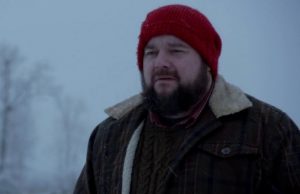Joan Didion died at the age of 87, leaving behind essays, memoirs, novels, and screenplays, as well as her grief at the deaths of her husband and daughter.
Parkinson’s disease was the cause of her death, according to a statement released by her publisher Knopf on Thursday.
Didion rose to prominence as a serious writer in the late 1960s as an early proponent of “new journalism,” which encouraged writers to take a more narrative, personal approach to reporting.
Also read: Joan Didion, legendary American writer and journalist, dies at 87
Her essay book “Slouching Toward Bethlehem,” titled after poet William Butler Yeats, was published in 1968 and focused on the culture of her home state of California. The book’s title essay gave an unflattering portrayal of San Francisco’s developing hippie culture, and a New York Times review dubbed it “some of the finest magazine pieces published by anyone in this country in recent years.”
Didion had a casual charm and writerly cool about her, and she was regularly seen in large sunglasses or lounging casually with a cigarette dangling from a hand during her prime. When Celine, a French fashion label, recruited her as a model in an ad campaign for its sunglasses in 2015, she was 80 years old.
Also read: Sally Ann Howes, famed for ‘Chitty Chitty Bang Bang’ dies at 91
The deaths of Didion’s husband, writer John Gregory Dunne, and daughter Quintana Roo Dunne in “The Year of Magical Thinking” and “Blue Nights” unwittingly led to a professional comeback in the 2000s.
Didion’s writings were perceptive, candid, and laced with a sense of dread and mistrust. She was described as an “unparalleled stylist” with “piercing insights and exquisite command of language” by the Los Angeles Times.
Didion was dubbed the “poet of the Great Californian Emptiness” by British writer Martin Amis, and she was particularly acute in her work about the state. Her 1970 novel “Play It as It Lays” depicted Los Angeles as glossy and vacuous through the perspective of a damaged actor, while her 2003 essay collection “Where I Was From” focused on the state’s culture as well as herself and her family’s lengthy history there.
Also read: From ‘Stereotype’ by STAYC to ‘Lilac’ by IU, five best K-pop songs of 2021
In a 1975 lecture at her alma school, the University of California in Berkeley, Didion remarked, “I write entirely to find out what I’m thinking, what I’m looking at, what I see and what it means.”
Her nephew, actor-filmmaker Griffin Dunne, documented her life and work in the 2017 documentary “Joan Didion: The Center Will Not Hold.” The film, which took its title from another Yeats piece, was described as “an intimate, affectionate, and partial portrait,” by the New Yorker magazine.
In the late 1950s, Didion won a college essay contest that presented her with an internship at Vogue magazine. Two years later, she ran into Dunne there.
Didion and Dunne, who were married for nearly 40 years and shared their lives between Southern California and New York, were prominent personalities in both literary and film communities. The parties at their Malibu beach house, where Harrison Ford worked as a carpenter before becoming famous for “Star Wars,” drew celebrities such as Janis Joplin, Steven Spielberg, Brian De Palma, and Martin Scorsese, as well as actor Warren Beatty, who was rumoured to be smitten by Didion.
Also read: From Yumi’s Cells to Hellbound, five best K-dramas of 2021
Dunne was outgoing and chatty, whereas Didion may come across as reserved. Dunne went to Las Vegas for a while after their marriage became strained. Didion writes in an article for “The White Album” that they had vacationed in Hawaii “in lieu of filing for divorce.”
They worked together on screenplays for the 1976 remake of “A Star Is Born,” “The Panic in Needle Park,” the 1971 film in which Al Pacino had his debut leading performance, as well as the cinematic adaptations of “Play It as It Lays” and Dunne’s novel “True Confessions.”
Didion wrote about Dunne’s heart attack at the dinner table in 2003, which won the National Book Award for Nonfiction, in “The Year of Magical Thinking,” which received the National Book Award for Nonfiction.
She stated, “Grief turns out to be a place none of us know until we reach it.”
Also read: Beyoncé, Jay-Z set to make history at 2022 Oscars. Here’s how
Didion returned to the scene of Dunne’s death twenty months later, when Quintana Roo died of severe pancreatitis after a series of health issues, which she recorded in “Blue Nights.”
After the deaths, Didion’s weight dropped to 75 pounds (34 kg), but she began to recover by working on a one-woman theatrical adaptation of “Magical Thinking,” which premiered on Broadway in 2007 and starred Vanessa Redgrave and was directed by David Hare.
President Barack Obama awarded Didion the National Medal of Arts in 2013. Her other works include the novel “A Book of Common Prayer” and non-fiction titles “Miami” and “Salvador.”







